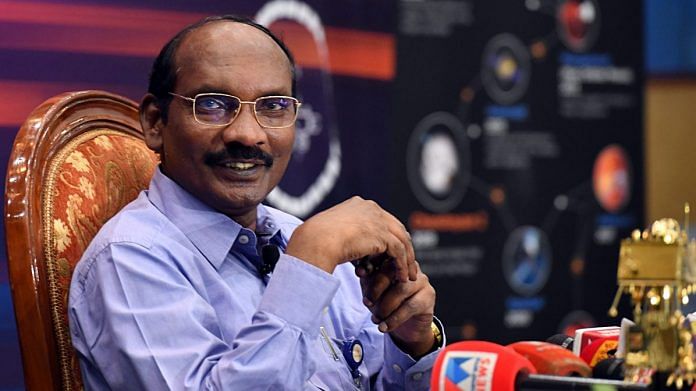Bengaluru: Indian Space Research Organisation (Isro) chief K Sivan detailed the country’s first manned mission to space Tuesday, saying the four men shortlisted for the programme will receive physical fitness training in Russia for 11 months, but the first spaceflight in December 2021 may carry just one person.
Under the mission, named Gaganyaan and expected to cost ₹10,000 crore, India is expected to send astronauts, all Indian Air Force pilots, to the low earth orbit, an earth-centred orbit with an altitude of 2,000km where most of the manmade objects in outer space are placed.
Prime Minister Narendra Modi announced the space mission from the ramparts of the Red Fort on August 15, 2018, saying that “an Indian son or daughter” will carry the national flag on the trip when the country celebrates its 75th year of Independence in 2022.
Sivan, however, confirmed on Tuesday that all astronauts shortlisted for the trip were men. “I cannot reveal the identities of the four individuals shortlisted for the Gaganyaan mission, but all of them are men,” the Isro chief told HT.
The astronauts will likely begin their training in Russia from the third week of January, the Indian space agency has said.
In Russia, the astronauts will receive physical fitness training in different types of environments to help them acclimatise to travelling in space. “The astronauts will undergo the physical fitness training in Russia for 11 months, after which they will receive module specific training in India. In that, they will train in the crew and service module designed by us, learn to operate it, work around it, do simulations,” Sivan said.
The Isro chief said Mysuru-based Defence Food Research Laboratory (DFRL) was preparing a food menu for the mission. “The food for the astronauts is being developed by DFRL. Apart from that, a number of DRDO labs are helping with various aspects of the mission. The space suit is also being designed; Russian help is being taken for that,” Sivan said.
News agency ANI tweeted that DFRL prepared food items including egg rolls, vegetarian rolls, idlis, moong dal halwa and pulao, along with a food heater. HT could not independently verify the list of food items being developed.
Sivan said that even though all four people will receive the complete training, it was likely that only one person would go to space during the first mission, which is scheduled for December 2021.
“We are designing the mission for three people to go to low earth orbit for seven days. However, whether we send two people or one person and whether they spend seven days in the orbit or one will be decided later on in the mission after the two unmanned flights. Usually, the first flight is very crucial and even countries such as the USA, Russia, and China sent only one person for the first time and for a very short time – one orbit, or one day, or even like the USA did only part of the orbit,” said Sivan.
The design of the crew and the service module, which will together form the Gaganyaan spacecraft, has been also been completed, the Isro chairperson said.
“The design for the launch vehicle that will be human-rated has also been completed. This is all on paper; the realisation hasn’t started yet. Once the realisation starts, the first model will come and it will go for qualification then the flight model will be made most likely by December this year. When you are planning a mission with humans, all systems have to be more robust; failure rate has to be low,” said Sivan.
India’s heaviest launch vehicle, the GSLV Mark III, referred to as “Bahubali”, will carry the module with astronauts to space. It has been redesigned to have a four-metre payload faring (the top of a launch vehicle where the spacecraft is housed).
The mission will take off from the second launch pad at the Satish Dhawan Space Centre at Sriharikota. The launch pad is also being remodelled to allow for human presence. Currently, no one is allowed beyond a distance of around 6km from the launch vehicle once the fuelling has taken place.
A committee of external experts has been set up to review the systems and check for robustness. “Usually, for other missions, the review is done by Isro people, but since humans are involved in the mission, a committee of external experts will review the work,” said Sivan.
A humanoid robot that will be sent on the unmanned flight is also taking shape. “This humanoid will basically mimic human functions, will record parameters such as blood pressure, heart rate, etc. This is getting ready. The two unmanned flights will let us ensure whether everything is working well, whether the environment in the modules are controlled, whether it is safe for humans. Like any programme, after two successful test flights, we will undertake the operational flight,” said Sivan.
Also read: This is how Indian astronauts will be trained for Gaganyaan in Russia
By special arrangement with ![]()



